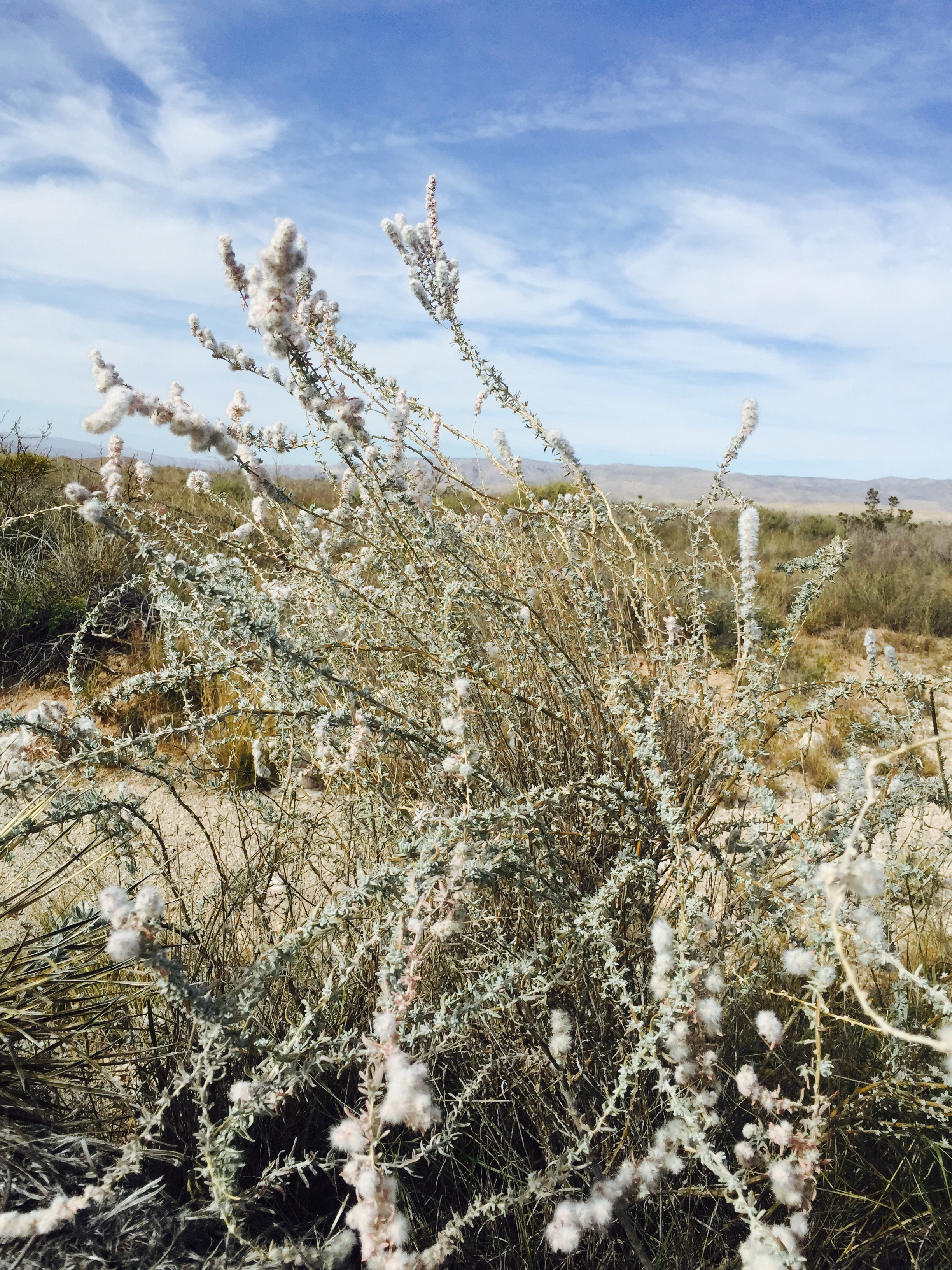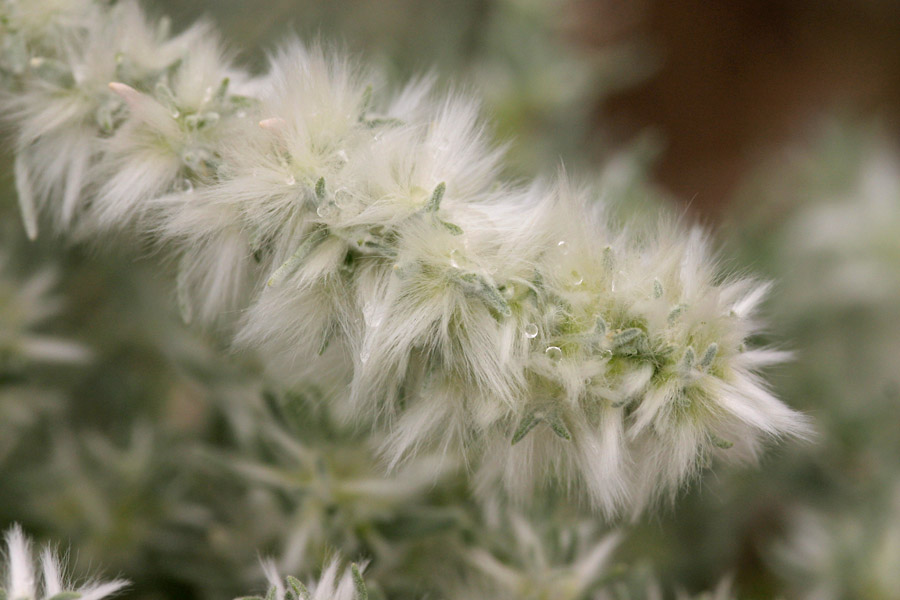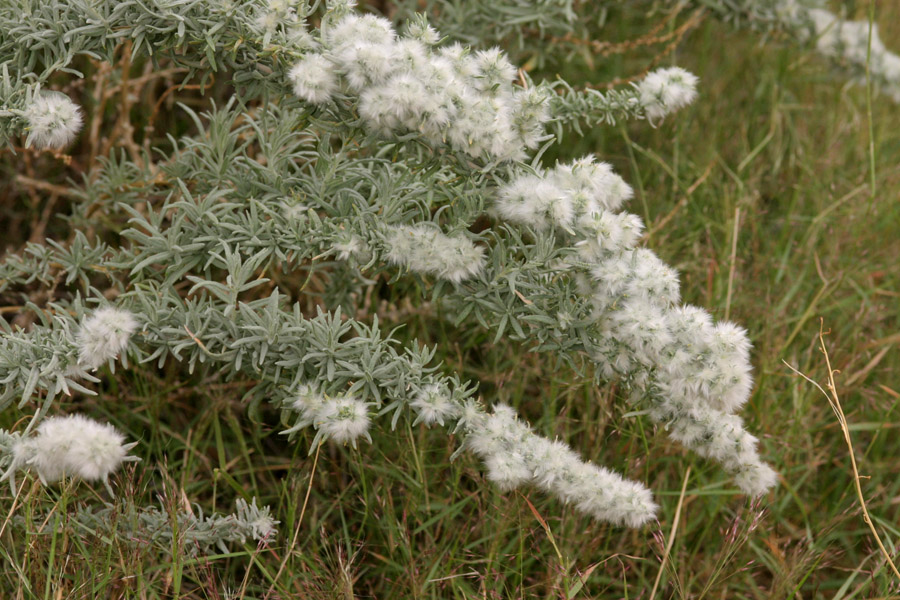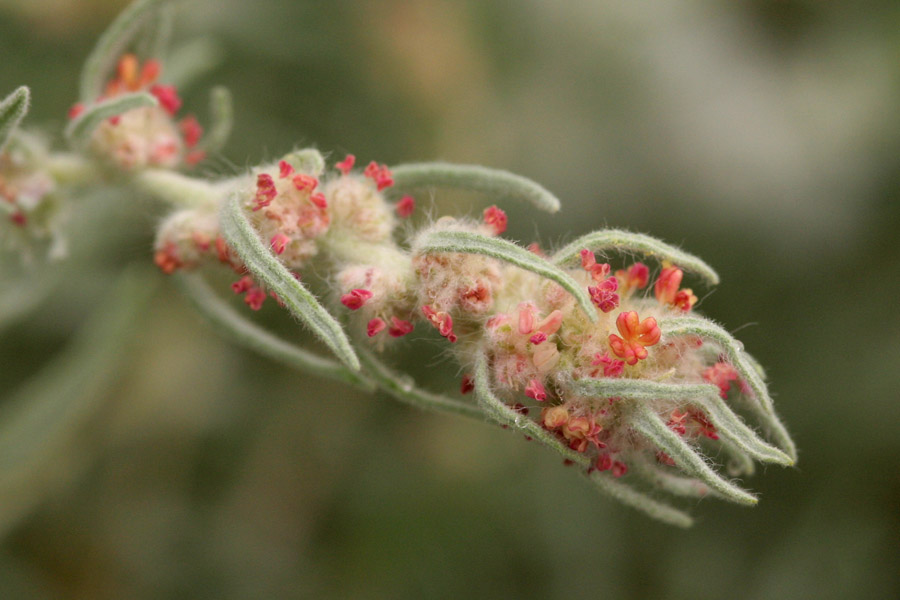Selected Plants of Navajo Rangelands
Winterfat

Winterfat is a low-growing, long-lived (up to 130 years) subshrub with a woody base and numerous annual branchlets, growing 1 to 3 feet tall. It has a hairy, silvery-white appearance. Winterfat occurs in dry valley bottoms, on flat mesas, and on hillsides, at elevations between 2,400 and 9,300 feet. It is drought resistant and intolerant of flooding, excess water, or acidic soils.
Winterfat is good forage for sheep, pronghorn, elk, mule deer, and many small mammals and birds. It is fair forage for cattle. It is most valued as winter forage. It will decrease under heavy, continuous grazing.
Grazing season can have more influence on winterfat than grazing intensity. Late winter or early spring grazing is most detrimental. Winterfat can tolerate winter use of 50% if it is rested occasionally. Spring and summer use should not exceed 35%. Early winter grazing may actually be beneficial.
It flowers April to September and reproduces from seed and sprouting. Sprouting of the buds near the plant base occurs when the plant is browsed or damaged.
Winterfat has been used as a hair wash, and a decoction from the leaves has been used to treat fevers.
*Description courtesy of Utah State University's Range Plants of Utah.




©2018 NMSU Board of Regents.
Individual photographers retain all rights to their images.
Partially funded by the
Western Sustainable
Agriculture Research and Education Program
(westernsare.org; 435.797.2257),
project EW15-023.
Programs and projects supported by Western SARE are
equally open to all people.